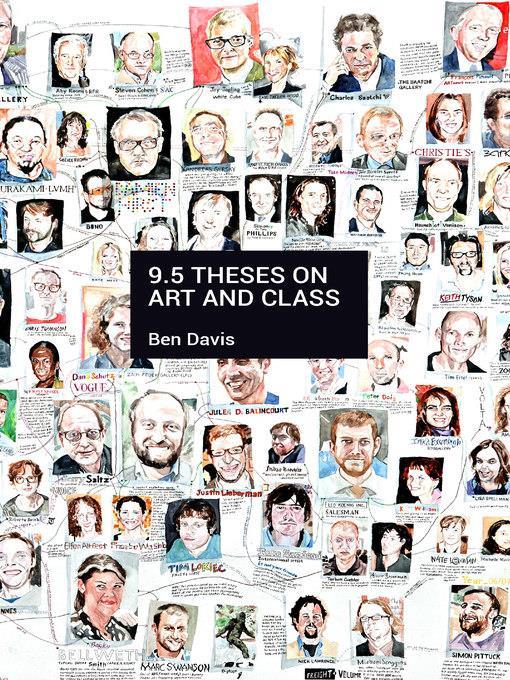
9.5 Theses on Art and Class
کتاب های مرتبط
- اطلاعات
- نقد و بررسی
- دیدگاه کاربران
نقد و بررسی

May 13, 2013
In this provocative essay collection, Artinfo executive editor Davis’s thesis makes the relentless theoretical debates over art and politics seem tangential. “There are no formal or aesthetic solutions to the political and economic dilemmas that art faces—only political and economic solutions,” he writes. An old-fashioned Marxist, Davis examines class and inequality to address problems that bedevil contemporary art (the distortions effected by scandalous amounts of cash, for instance), problems that he claims are also those of society at large. Davis is an intellectually clearheaded critic dishing out some tough truths, often backed up with statistics, to the rarefied “art world.” For example, he attributes the underrepresentation of female artists in galleries and collections to the gender pay gap and the absence of an “activist-oriented women’s rights movement.” He condemns what he aptly calls “aesthetic politics” as a delusion and an “excuse not to be engaged in the difficult, ugly business of organizing.” His claim that visual art is essentially a form of “middle-class labor” dispels the lofty romance that obscures the social position of artists. The book reframes the production and sale of art in tough terms, which is why the collection’s centerpiece, “9.5 Theses on Art and Class,” should be required reading for art professionals. In this first book, Davis proves himself a critic to be reckoned with.

September 15, 2013
In this audacious new collection of essays, critic and Artinfo executive editor Davis seeks to expose the decisive role of class in the contemporary art world. According to Davis, the often antagonistic economic relations among artists, curators, gallerists, and dealers barely figure in art criticism, which too often ignores the economic infrastructure surrounding artworks or simply conflates the art world with the art market. Offering an alternative approach that is at once critical and pragmatic, Davis emphasizes the striations of class cutting across the domain of art, while recognizing the difficulties artists and critics face in challenging them. Hence, he rejects the idea that artworks can themselves be politically efficacious, calling instead for concrete, collective action outside of museums and galleries. While such an unapologetically Marxist intervention is welcome, some may question the definition of class upon which Davis's theses rely. For instance, he flatly defines artists as middle class by virtue of their individualized and creative labor, neglecting questions of wealth, economic security, and cultural prestige. VERDICT Certain to appeal to anyone interested in the vexed relationship between contemporary art and class.--Jonathan Patkowski, CUNY Graduate Ctr.
Copyright 2013 Library Journal, LLC Used with permission.

























دیدگاه کاربران